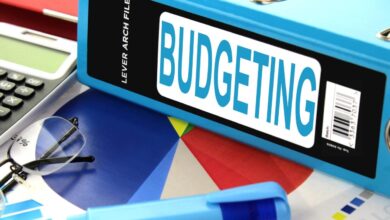Shop Smarter: Master the Art of Value

The act of spending money is an integral, unavoidable part of modern life, but for many, it often feels more like a necessary evil than a conscious decision.
We are constantly bombarded with marketing messages designed to trigger impulsive purchases and convince us that immediate gratification is the key to happiness.
This environment makes the distinction between “spending” and “shopping smartly” absolutely critical to long-term financial health.
Smart shopping is not about relentless frugality or denying yourself everything you enjoy; instead, it is a sophisticated discipline centered on maximizing the value you extract from every single dollar you spend.
It means making intentional choices that align your purchases with your budget, needs, and long-term goals, effectively removing the emotional element from the transaction.
When you become a truly smart shopper, you transform from a passive consumer into an active financial gatekeeper, ensuring that your resources are conserved for truly important things like investments, debt payoff, and savings.
By adopting specific strategies and changing your spending mindset, you can dramatically increase your purchasing power and free up substantial cash flow without feeling deprived, turning everyday expenses into opportunities for financial optimization.
This skill is the vital bridge between having a budget and actually sticking to it, ensuring your hard-earned money works smarter, not just harder.
I. The Psychological Edge: Mindset Before Money

The foundation of smart shopping is mastering the psychology of consumerism and your own internal biases.
A. The Difference Between Need and Want
Most overspending stems from confusing a want (something desirable but non-essential) with a need (something required for survival or basic functioning). You must clearly define these two categories before you even step into a store or open an online shopping app.
B. Understanding Hedonic Adaptation
This is the consumer phenomenon where the thrill of a new purchase quickly fades, leaving you no happier than before the purchase. Recognizing that “stuff” doesn’t buy long-term happiness is a powerful motivator to limit impulsive buying and prioritize experiences or investments instead.
C. The Power of Delayed Gratification
By implementing a “cooling-off period” (e.g., 24 to 48 hours) for any non-essential purchase, you allow the emotional impulse to pass. Most of the time, the item will seem much less appealing once you’ve had time to rationally consider the purchase within the context of your budget.
D. Avoiding Marketing Traps
Learn to identify common sales tactics like “limited-time offers,” “fear of missing out (FOMO),” and “bundle deals”that often encourage you to buy things you never intended to purchase. Recognizing these triggers helps you remain objective and focused.
II. The Preparation Phase: Before You Spend a Dime
Smart shopping requires more planning than impulsive shopping, but the preparation effort pays off exponentially in savings.
A. Create a Master Shopping List
Never shop without a detailed, prioritized list for every outing, whether it’s for groceries, clothes, or home goods. The list acts as your financial guardrail, keeping you focused and preventing you from wandering into impulse territory.
B. Budgeting for Specific Categories
Know exactly how much money you have allocated for each category (e.g., Groceries, Apparel, Personal Care) beforeyou shop. This figure acts as a non-negotiable hard limit, making your spending decisions data-driven, not emotion-driven.
C. Declutter and Inventory First
Before buying something new, especially clothing or home goods, take inventory of what you already own. Often, the item you think you need is already buried in a drawer or closet, saving you a purchase and preventing clutter.
D. Check Unit Prices and Value
For groceries and household goods, train yourself to ignore the total price and focus instead on the unit price (price per ounce, per sheet, etc.). Buying in bulk is only smarter if the unit price is genuinely lower and you will use the item before it expires.
III. Mastering the Art of Grocery Shopping

Groceries are one of the largest and most frequent expenses, making them a prime target for smart shopping optimization.
A. Never Shop When Hungry
Shopping on an empty stomach dramatically increases the likelihood of impulsive purchases, particularly for high-margin, less healthy snack foods. Eat a small meal or snack before you go to the store.
B. Plan Meals Around Sales
Instead of writing a list and hoping the items are on sale, review the weekly flyers first. Plan your meals and list around the items (proteins, produce) that are currently marked down, flipping the traditional shopping model.
C. Use Loyalty Programs and Coupons
Maximize your savings by consistently using the store’s loyalty card or app to access exclusive discounts. Dedicate a small, consistent amount of time each week to clipping or digitally loading coupons for items you already planned to buy.
D. Stick to the Perimeter
Most grocery stores place their essential, least-processed, and cheapest items (produce, dairy, fresh meat) around the outside perimeter. The inner aisles are filled with high-margin, processed, and tempting items. Minimize time spent in the inner aisles to save both money and health.
E. Buy Generic or Store Brands
For most pantry staples, cleaning supplies, and non-prescription medications, store brands or generic equivalents often use the exact same ingredients as national brands but cost significantly less. Always choose the value option when the quality difference is negligible.
IV. Smart Shopping for Durable Goods and Electronics
When purchasing high-value items with a long lifespan, the focus shifts from frequent savings to timing, research, and negotiation.
A. Research the Product Lifespan and Reviews
Before committing to a large electronic or appliance purchase, thoroughly investigate its expected lifespan and review recent user feedback. Paying slightly more for a demonstrably higher-quality, longer-lasting item often saves money in the long run by avoiding early replacement costs.
B. Identify Optimal Shopping Seasons
Certain items follow predictable sales cycles based on the month, allowing you to time your purchases for maximum discounts.
- A. Appliances: Usually see the deepest discounts in September and October as new models are released.
- B. Televisions: Are heavily discounted in January and February around the Super Bowl.
- C. Cars: Generally offer the best deals at the end of the month, the end of the quarter, and the end of the model year (late summer/early fall).
C. Utilize Price Comparison Tools
Before clicking “buy,” use online tools and browser extensions that automatically compare the current price across multiple retailers. Always check if the same item is available used or refurbished directly from the manufacturer for a substantial discount.
D. Negotiate Everything
For large purchases like furniture, cars, or major appliances, assume the price tag is merely a suggestion. Be prepared to negotiate a lower price, ask for bundled services, or request add-ons at no extra cost. The worst they can say is no.
V. The Digital Shopping Discipline
Online shopping offers convenience but presents unique challenges for the smart shopper due to its ease and constant accessibility.
A. Clear Your Digital Shopping Cart
When shopping online, place items in your cart but do not check out immediately. Implement your cooling-off period and revisit the cart later. Many retailers track abandoned carts and may send you a discount code to complete the purchase.
B. Use Dedicated E-Bags and Cash-Back Sites
Install browser extensions that alert you to available coupon codes and use cash-back portals (like Rakuten or Honey) that give you a percentage of your purchase back in cash or points. This is effortless, passive savings.
C. Avoid Saving Payment Information
Do not save your credit card information on major retail websites. Forcing yourself to physically retrieve your wallet and enter the 16-digit number adds a layer of friction to the checkout process, making impulse buying less convenient.
D. Unsubscribe from Marketing Emails
Marketing emails are specifically designed to tempt you with “must-have” deals and sales. Unsubscribe from all non-essential retail email lists to reduce exposure to temptation. If you need a specific item, you can simply visit their website directly.
VI. Smart Shopping for Services and Memberships
Smart shopping extends beyond physical goods to include recurring costs for services, subscriptions, and memberships.
A. Audit and Cull Subscriptions
Once a month, review your bank and credit card statements for all recurring charges. Cancel any subscription(streaming, app, magazine) that you haven’t used actively in the last 30 days.
B. Utilize Trial Periods
For new services, always take advantage of the free trial period, but set a reminder on your calendar to cancel one day before the paid subscription automatically starts. This ensures you only pay for services you are committed to using.
C. Bundle and Negotiate Services
Call your utility and service providers (internet, cable, phone) and ask for a better deal. See if you can bundle services for a discount or use competitor offers to negotiate a lower rate with your current provider.
D. Look for Alternative Providers
For services like banking, check if you can get a better deal (lower fees, higher interest rates) at a local credit union or an online bank. Similarly, shop around for better rates on all your insurance policies annually.
Conclusion
Smart shopping is the continuous practice of prioritizing value and intentionality over impulse and convenience.
This discipline acts as a powerful defense against the constant pressure of consumerism and a key driver of your overall budget’s success.
By incorporating planning, research, and psychological awareness into every transaction, you dramatically reduce financial waste and maximize your purchasing power.
The consistent application of these strategies ensures that your money is not only saved but also spent effectively, aligning your daily life with your future financial objectives.
This mastery over your spending habits is an act of empowerment, paving the way for substantial savings and accelerating your journey toward true financial independence.




